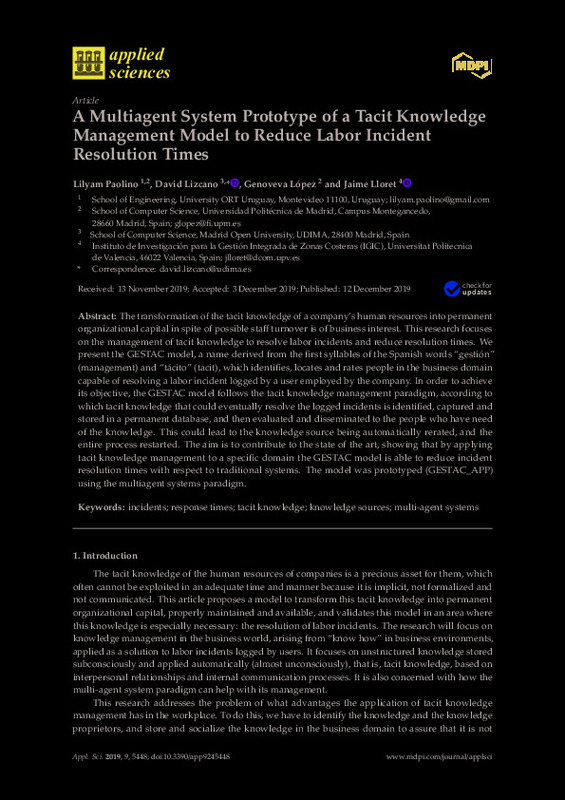JavaScript is disabled for your browser. Some features of this site may not work without it.
Buscar en RiuNet
Listar
Mi cuenta
Estadísticas
Ayuda RiuNet
Admin. UPV
A Multiagent System Prototype of a Tacit Knowledge Management Model to Reduce Labor Incident Resolution Times
Mostrar el registro completo del ítem
Paolino, L.; Lizcano, D.; López, G.; Lloret, J. (2019). A Multiagent System Prototype of a Tacit Knowledge Management Model to Reduce Labor Incident Resolution Times. Applied Sciences. 9(24):1-33. https://doi.org/10.3390/app9245448
Por favor, use este identificador para citar o enlazar este ítem: http://hdl.handle.net/10251/188313
Ficheros en el ítem
Metadatos del ítem
| Título: | A Multiagent System Prototype of a Tacit Knowledge Management Model to Reduce Labor Incident Resolution Times | |
| Autor: | Paolino, Lilyam Lizcano, David López, Genoveva | |
| Entidad UPV: |
|
|
| Fecha difusión: |
|
|
| Resumen: |
[EN] The transformation of the tacit knowledge of a company's human resources into permanent organizational capital in spite of possible staff turnover is of business interest. This research focuses on the management of ...[+]
|
|
| Palabras clave: |
|
|
| Derechos de uso: | Reconocimiento (by) | |
| Fuente: |
|
|
| DOI: |
|
|
| Editorial: |
|
|
| Versión del editor: | https://doi.org/10.3390/app9245448 | |
| Agradecimientos: |
This work has been developed under the project called "Creation of a characterization framework for the quantification of quality in the new paradigms of web development", with identifier FH 2017-055. We would like to thank ...[+]
|
|
| Tipo: |
|









